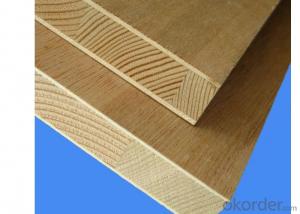Plywood, a material that has been around for centuries, is a type of engineered wood that is made from thin layers of wood veneer that are glued together with adjacent layers having their wood grain perpendicular to each other. The result is a strong, stable, and versatile material that is widely used in various applications. One of the most popular types of plywood is the 1/2 inch plywood, which is known for its durability and versatility. In this article, we will explore the many uses of 1/2 inch plywood and why it is a favorite among woodworkers, DIY enthusiasts, and professionals alike.
The Beauty of Plywood
Plywood is not just a functional material; it is also aesthetically pleasing. The layers of wood veneer create a unique pattern that can be appreciated in its natural state or finished with paint or stain. This makes plywood an excellent choice for both functional and decorative purposes. Whether you are building furniture, creating art pieces, or constructing structures, plywood can add a touch of elegance and sophistication to your project.
The Strength of 1/2 Inch Plywood
The 1/2 inch plywood is known for its strength and durability. The layers of veneer are glued together under high pressure, which results in a strong bond that makes the plywood resistant to warping, cracking, and splitting. This makes it an ideal choice for heavy-duty applications where a strong and stable material is required.
Versatility in Design and Construction
One of the most significant advantages of 1/2 inch plywood is its versatility. It can be used in a wide range of applications, from furniture making to home construction. Here are some of the many uses of 1/2 inch plywood:
– Furniture Making: Plywood is a popular choice for furniture making because it is strong, stable, and easy to work with. It can be cut, sanded, and shaped into various forms, making it perfect for creating tables, chairs, beds, and more.
– Cabinetry: Plywood is also an excellent material for building cabinets. It is strong enough to hold heavy loads and can be finished to achieve a high-quality look.
– Flooring: 1/2 inch plywood can be used as a subfloor or even as the finished floor in some cases. It provides a stable and durable surface that can withstand foot traffic and heavy loads.
– Walls and Ceilings: In home construction, plywood is often used for sheathing walls and ceilings. It provides a strong and stable base for attaching other materials and can also be used for decorative purposes.
– Roofing: Plywood is a common material for roofing due to its strength and resistance to weather conditions. It can be used as a base for shingles or tiles and can also be left exposed for a rustic look.
– Art and Crafts: For those with a creative side, plywood is an excellent medium for various art and craft projects. Its smooth surface and ability to be cut and shaped make it perfect for creating sculptures, models, and other artistic creations.
Working with 1/2 Inch Plywood
Working with 1/2 inch plywood is relatively easy, even for beginners. Here are some tips for working with this versatile material:
– Cutting: Plywood can be cut with a variety of tools, including circular saws, table saws, and hand saws. It is essential to use a sharp blade and to cut slowly and carefully to avoid chipping or splitting the veneer layers.
– Sanding: Sanding plywood is straightforward, but it is crucial to sand in the direction of the grain to avoid scratches. Start with a coarse grit sandpaper and work your way up to a finer grit for a smooth finish.
– Finishing: Plywood can be finished with paint, stain, or clear coatings. If you choose to stain the plywood, it is a good idea to apply a wood conditioner first to ensure even coloring.
– Joinery: When joining plywood pieces, it is best to use screws or wood glue for a strong bond. Nails can also be used, but they may not provide as strong a connection.
Sustainability and Environmental Impact
Plywood is considered a sustainable material because it is made from layers of wood veneer, which makes efficient use of the wood resource. Additionally, the manufacturing process of plywood generates less waste compared to solid wood products. This makes plywood an environmentally friendly choice for those looking to reduce their ecological footprint.
Cost-Effectiveness of 1/2 Inch Plywood
1/2 inch plywood is not only versatile and strong but also cost-effective. It is generally more affordable than solid wood, making it an attractive option for those on a budget. The cost savings can be significant, especially for large projects where the material costs can add up quickly.
Conclusion
In conclusion, 1/2 inch plywood is a fantastic material for a wide range of applications. Its strength, durability, and versatility make it a favorite among professionals and DIY enthusiasts. Whether you are building furniture, constructing a home, or creating art, 1/2 inch plywood is a reliable and cost-effective choice. So why not give it a try for your next project and experience the benefits of this versatile material for yourself?

